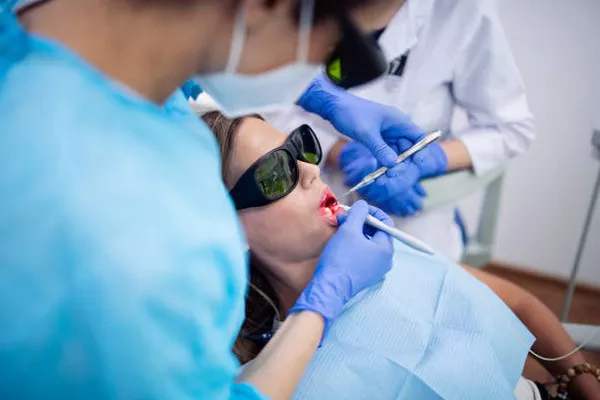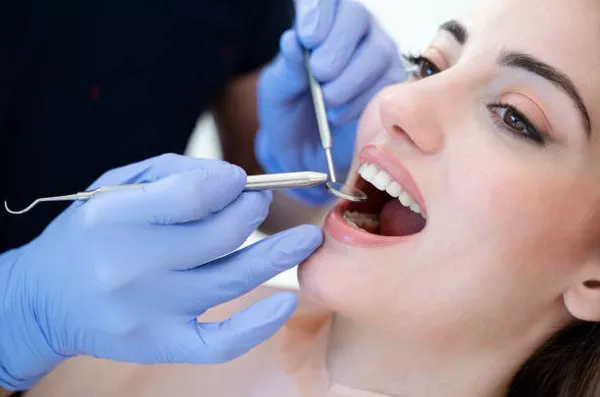Gingivitis is the earliest stage of gum disease, characterized by inflammation of the gums. It is primarily caused by the buildup of plaque—a sticky film of bacteria that forms on teeth. If not removed, plaque can harden into tartar, which further irritates the gums and provides an environment for more bacteria to thrive. This progression can lead to red, swollen, and bleeding gums, the hallmark signs of gingivitis.
How Plaque, Tartar, and Bacteria Contribute to Gingivitis
Plaque forms on teeth when bacteria in the mouth mix with sugary and starchy foods. If plaque is not regularly removed through brushing and flossing, it hardens into tartar. Tartar is more difficult to remove and requires professional cleaning. Both plaque and tartar harbor bacteria, which release toxins that irritate and inflame the gums, leading to gingivitis. This condition, if left untreated, can progress to more severe forms of gum disease, such as periodontitis.
Symptoms of Gingivitis
Recognizing the early symptoms of gingivitis is crucial for prompt treatment and prevention of more serious gum disease. Common symptoms include:
- Bad breath that persists even after brushing: Halitosis, or chronic bad breath, is often a sign of gum disease. The bacteria that cause gingivitis can produce foul-smelling compounds.
- Bleeding gums, especially during toothbrushing: One of the earliest and most common signs of gingivitis is gums that bleed easily when brushing or flossing.
- Redness and swelling of the gums: Healthy gums are firm and pink. Inflamed gums appear red and swollen.
- Sensitivity to hot or cold foods: Increased sensitivity can occur when the gums start to recede slightly, exposing the sensitive parts of the teeth.
- Pain or tenderness while chewing: Inflammation and infection of the gums can make chewing painful.
see also:How to treat pregnancy gingivitis?
Risk Factors
Certain factors can increase the risk of developing gingivitis. Understanding these can help in taking preventive measures.
- Poor oral hygiene: Inadequate brushing and flossing allow plaque to accumulate and harden into tartar, leading to gum inflammation.
- Crooked teeth that are difficult to clean: Misaligned teeth can create hard-to-reach areas where plaque can build up.
- Hormonal changes (e.g., pregnancy): Hormonal fluctuations can make gums more sensitive and susceptible to gingivitis.
- Diabetes: People with diabetes are at higher risk for infections, including gum disease.
- Family history of gum disease: Genetics can play a role in one’s susceptibility to gingivitis.
- Smoking or tobacco use: Tobacco products impair the immune system and can damage gum tissue, making it more vulnerable to infection.
Treatment Options
Treating gingivitis involves professional dental care and improved oral hygiene practices. Addressing gingivitis early can prevent it from progressing to more severe forms of gum disease.
Professional Dental Care
- Regular dental cleanings: Professional cleanings remove plaque and tartar that cannot be eliminated through regular brushing and flossing. Dentists use specialized tools to clean below the gumline, reducing bacterial buildup.
- Dental check-ups: Routine check-ups allow for early detection and treatment of gingivitis. Dentists can provide personalized advice on improving oral hygiene.
Improved Oral Hygiene Practices
Good oral hygiene is essential in treating and preventing gingivitis. This includes:
- Brushing teeth at least twice daily: Use a soft-bristled toothbrush and fluoride toothpaste. Brush for at least two minutes, ensuring all surfaces of the teeth are cleaned.
- Flossing daily: Flossing removes plaque and food particles from between the teeth and along the gumline, areas that a toothbrush cannot reach.
- Using antibacterial mouthwash: Mouthwash can reduce bacteria in the mouth and help control plaque. Choose a mouthwash specifically designed to combat gingivitis.
Lifestyle Changes
Certain lifestyle changes can also help manage and prevent gingivitis:
- Avoid snacking throughout the day: Frequent snacking, especially on sugary or starchy foods, can increase plaque buildup. Limit snacks and choose healthy options when you do snack.
- Quit smoking or using tobacco products: Tobacco use significantly increases the risk of gum disease. Quitting smoking can improve gum health and overall oral hygiene.
Home Remedies
In addition to professional care and improved hygiene practices, several home remedies can help manage gingivitis:
- Brush teeth at least twice daily: Consistent and thorough brushing is critical in removing plaque and preventing gingivitis.
- Floss daily: Daily flossing helps remove plaque from areas between the teeth and along the gumline.
Use antibacterial mouthwash: Mouthwash with antibacterial properties can help reduce bacteria and control plaque. - Consider saltwater rinses: Rinsing with warm saltwater can soothe inflamed gums and reduce bacteria. Mix a teaspoon of salt in a glass of warm water and rinse your mouth for 30 seconds.
see also:How to treat mild gingivitis?
Conclusion
Early gingivitis is a common yet preventable condition. By understanding the causes, recognizing the symptoms, and taking proactive steps through professional care, improved oral hygiene, and lifestyle changes, you can effectively treat and prevent gingivitis. Regular dental visits, proper brushing and flossing techniques, and avoiding risk factors such as smoking can all contribute to healthier gums and a brighter smile. If you suspect you have gingivitis, don’t hesitate to seek professional advice to prevent further complications.
FAQs about Gingivitis
1. How do I get rid of gingivitis ASAP?
To get rid of gingivitis as soon as possible, follow these steps:
- Brush Your Teeth Twice Daily: Use a soft-bristled toothbrush and fluoride toothpaste. Brush for at least two minutes, covering all surfaces of your teeth and gums.
- Floss Daily: Flossing helps remove plaque and food particles between teeth that brushing alone can’t reach.
- Use an Antibacterial Mouthwash: Rinse with an antibacterial mouthwash to reduce plaque and bacteria in your mouth.
- Maintain a Healthy Diet: Reduce sugar intake and eat a balanced diet to support oral health.
- Stay Hydrated: Drink plenty of water to help wash away food particles and bacteria.
- Avoid Tobacco Products: Smoking or chewing tobacco can exacerbate gingivitis and hinder healing.
- Visit a Dentist: Schedule a professional cleaning to remove plaque and tartar buildup that you can’t reach at home.
2. How do you reverse stage 1 gingivitis?
Reversing stage 1 gingivitis involves consistent and thorough oral hygiene practices:
- Regular Brushing: Brush your teeth twice a day with fluoride toothpaste.
- Daily Flossing: Floss at least once a day to remove plaque between your teeth.
- Antimicrobial Mouthwash: Use an antimicrobial mouthwash to kill bacteria and reduce plaque.
- Professional Cleaning: Visit your dentist for a professional cleaning to remove tartar and plaque buildup.
- Healthy Lifestyle Choices: Eat a nutritious diet, avoid sugary foods and beverages, and refrain from using tobacco products.
3. Can gingivitis go away on its own?
Gingivitis will not go away on its own without proper oral hygiene. If left untreated, it can progress to more severe gum disease (periodontitis). However, with improved oral care practices such as regular brushing, flossing, and dental cleanings, gingivitis can be reversed.
4. What does stage 1 gingivitis look like?
Stage 1 gingivitis typically presents with the following signs:
- Red and Swollen Gums: Gums may appear redder than usual and swollen.
- Bleeding Gums: Gums may bleed easily when brushing or flossing.
- Tender Gums: Gums might feel tender or sensitive.
- Bad Breath: Persistent bad breath (halitosis) can be a sign of gingivitis.
- Plaque Buildup: Visible plaque on teeth near the gum line.
You Might Be Interested In





























